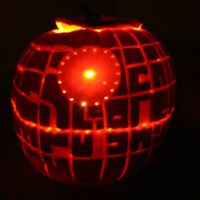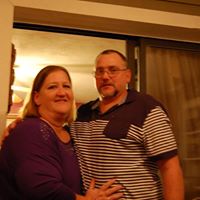Richard Olof Lind
age ~82
from Monterey, CA
- Also known as:
-
- Richard O Lind
- Richard O Limo
- Richard O'Lind
- Phone and address:
-
98 Seafoam Ave, Monterey, CA 93940
8313756521
Richard Lind Phones & Addresses
- 98 Seafoam Ave, Monterey, CA 93940 • 8313756521
- 2128 Bueno Dr #3, Davis, CA 95616 • 8313756521
- Oxnard, CA
- Bullhead City, AZ
- Henderson, NV
Work
-
Position:Clerical/White Collar
Education
-
Degree:Graduate or professional degree
Ranks
-
Licence:Virginia - Authorized to practice law
-
Date:1995
Name / Title
Company / Classification
Phones & Addresses
President
Everts-Lind Enterprises Ltd
Contractors - General. Construction & Remodeling Services. Home Builders
Contractors - General. Construction & Remodeling Services. Home Builders
5722 Hwy 332, Middle Lahave, NS B4V 2Y5
9027664533
9027664533
Owner
Richard Lind DC MD
Chiropractor's Office
Chiropractor's Office
75 Neilson St, Watsonville, CA 95076
President
Everts-Lind Enterprises Ltd
Contractors - General · Construction & Remodeling Services · Home Builders
Contractors - General · Construction & Remodeling Services · Home Builders
9027664533
Gulls' Nest Property LLC
Real Estate Management
Real Estate Management
98 Seafoam Ave, Monterey, CA 93940
Lawyers & Attorneys

Richard Jonathan Lind - Lawyer
view sourceLicenses:
Virginia - Authorized to practice law 1995

Richard Lind - Lawyer
view sourceSpecialties:
Zoning, Planning and Land Use
Municipal Law
Government Law
Municipal Law
Government Law
ISLN:
905433385
Admitted:
1984
University:
University of Kansas, B.A., 1976
Law School:
Washburn University, J.D., 1983

Richard Lind - Lawyer
view sourceOffice:
Marriott International, Inc.
Specialties:
General Practice
Brand and Franchise Transactions
Brand and Franchise Transactions
ISLN:
910043883
Admitted:
1995
University:
Cornell University, B.S., 1992
Law School:
American University, J.D., 1995
Medicine Doctors

Richard A. Lind
view sourceSpecialties:
Occupational Medicine, Internal Medicine
Work:
California Occupational Physicians
2112 Mchenry Ave STE B, Modesto, CA 95350
2095722114 (phone), 2095720804 (fax)
2112 Mchenry Ave STE B, Modesto, CA 95350
2095722114 (phone), 2095720804 (fax)
Education:
Medical School
American University of the Caribbean School of Medicine
Graduated: 1997
American University of the Caribbean School of Medicine
Graduated: 1997
Conditions:
Diabetes Mellitus (DM)
Disorders of Lipoid Metabolism
Fractures, Dislocations, Derangement, and Sprains
Disorders of Lipoid Metabolism
Fractures, Dislocations, Derangement, and Sprains
Languages:
English
Spanish
Spanish
Description:
Dr. Lind graduated from the American University of the Caribbean School of Medicine in 1997. He works in Modesto, CA and specializes in Occupational Medicine and Internal Medicine. Dr. Lind is affiliated with Doctors Medical Center Modesto and Memorial Medical Center.

Richard A. Lind
view sourceSpecialties:
Podiatric Medicine
Work:
Carmel Foot Specialist DPMCarmel Foot Specialists
717 S Torrence St STE 200, Charlotte, NC 28204
7043348682 (phone), 7043340754 (fax)
Carmel Foot Specialist DPMCarmel Foot Specialists
10370 Park Rd STE 100E, Charlotte, NC 28210
7045428253 (phone), 7045410186 (fax)
717 S Torrence St STE 200, Charlotte, NC 28204
7043348682 (phone), 7043340754 (fax)
Carmel Foot Specialist DPMCarmel Foot Specialists
10370 Park Rd STE 100E, Charlotte, NC 28210
7045428253 (phone), 7045410186 (fax)
Conditions:
Hallux Valgus
Plantar Fascitis
Tinea Pedis
Plantar Fascitis
Tinea Pedis
Languages:
English
Spanish
Spanish
Description:
Dr. Lind works in Charlotte, NC and 1 other location and specializes in Podiatric Medicine.

Richard J. Lind
view sourceSpecialties:
Gastroenterology
Work:
Leelavathi Katsuri MD PC
10235 64 Rd, Forest Hills, NY 11375
7188962710 (phone), 3475480151 (fax)
10235 64 Rd, Forest Hills, NY 11375
7188962710 (phone), 3475480151 (fax)
Languages:
English
Spanish
Spanish
Description:
Mr. Lind works in Forest Hills, NY and specializes in Gastroenterology. Mr. Lind is affiliated with Flushing Hospital Medical Center, Forest Hills Hospital and Queens Hospital Center.

Richard Allan Lind
view sourceSpecialties:
Internal Medicine
Preventive Medicine
Occupational Medicine
Occupational Medicine
Preventive Medicine
Occupational Medicine
Occupational Medicine
Education:
American University of the Caribbean (1997)
Us Patents
-
Integrated Radar-Camera Sensor
view source -
US Patent:8604968, Dec 10, 2013
-
Filed:Oct 6, 2009
-
Appl. No.:13/119307
-
Inventors:Stephen W. Alland - Newbury Park CA, US
Richard C. Lind - Noblesville IN, US
William G. Shogren - Noblesville IN, US
Lawrence A. Humm - West Hills CA, US
William A. Bauson - Zambia, ZM
Shawn Shi - Thousand Oaks CA, US -
Assignee:Delphi Technologies, Inc. - Troy MI
-
International Classification:G01S 13/00
-
US Classification:342 70, 342 22, 342 27
-
Abstract:An integrated radar-camera sensor is provided which includes a camera sensor component and a radar sensor component both housed within a common single module housing. The sensor module also includes processing circuitry for processing the radar sensor and camera outputs. The sensor module is located behind the windshield of a vehicle and may include glare and/or EMI shields.
-
Four-Pass Phase Conjugate Optical Amplifier System And Method
view source -
US Patent:49437828, Jul 24, 1990
-
Filed:Mar 21, 1988
-
Appl. No.:7/170957
-
Inventors:Ronald R. Stephens - Westlake Village CA
Richard R. Craig - Los Angeles CA
Huan W. Yen - Westlake CA
Richard C. Lind - Woodland Hills CA -
Assignee:Hughes Aircraft Company - Los Angeles CA
-
International Classification:H01S 398
-
US Classification:330 43
-
Abstract:A four-pass conjugate optical amplifier system and method are disclosed in which a linear polarized optical beam is directed by various optical elements through four passes of a power amplifier, preferably a diode laser structure. The beam is phase conjugated at the optical midpoint between the second and third amplifying passes, and is controlled by the optical elements so that its polarization is substantially the same during the first and second passes, and again substantially the same during the third and fourth amplifying passes. This is accomplished by a reflective coating on the back facet of the diode laser structure, with a non-reciprocal polarization rotation element located in the beam path between the phase conjugate mirror and power amplifier. For considerably enhanced power amplification, the beam may be divided into an array of subbeams, which are individually amplified by four passes through respective power amplifiers. The subbeams are processed by the optical system so that they recombine into a single coherent output beam after full amplification.
-
Apparatus And Method For Spatial Intensity Threshold Detection
view source -
US Patent:47156899, Dec 29, 1987
-
Filed:May 20, 1986
-
Appl. No.:6/864937
-
Inventors:Thomas R. O'Meara - Malibu CA
Richard C. Lind - Woodland Hills CA -
Assignee:Hughes Aircraft Company - Los Angeles CA
-
International Classification:G02B 523
G02F 101 -
US Classification:350354
-
Abstract:A phase conjugate resonator (PCR) employing at least one phase conjugate mirror (PCM) provides high resolution spatial detection of individual locations in a two-dimensional optical array which exceed or fall below a threshold level. In one embodiment the optical intensity profile under investigation is imposed either onto one or both of the pump beams of a degenerate four-wave mixing PCM. In another embodiment a pair of PCMs are used as the two mirrors forming the PCR, with the pump beams for one PCM modulated and the pump beams for the other PCM serving as a threshold reference. In either case, the spatially modulated optical output may be read out with multiple detectors or an imaging system, or the cumulative area output of the PCR can be read out with a single detector to characterize the intensity profile relative to the threshold.
Isbn (Books And Publications)


Dreams, Life, and Literature: A Study of Franz Kafka
view sourceAuthor
Richard E. Lind
ISBN #
0807811297

Youtube
Myspace
Flickr
Plaxo

richard lind
view sourceSenior Consultant at RNL Consulting
Classmates

Richard Lind II
view sourceSchools:
Hillcrest Christian High School Jackson MS 2000-2004
Community:
Paula Cooper, Gail Flemmons, Wendi Martin, David Varner

Richard Lind
view sourceSchools:
Our Lady of Mercy School Chicago IL 1987-1992
Community:
Joe Kampf, Marc Guerrero, George Samaras, Angie Golik, Reda Caldwell, Tommy Mcnamera

Richard Lind
view sourceSchools:
Carrollton Junior High School Carrollton OH 1964-1966
Community:
Christopher Eddy

Richard Lind | Coral Suns...
view source
Hebrew Academy of San Fra...
view sourceGraduates:
Leslie Besterman (1974-1979),
Richard Lind (1972-1974)
Richard Lind (1972-1974)

Grattan Elementary School...
view sourceGraduates:
Richard Lind (1975-1976),
Asoniti Foster (1979-1989)
Asoniti Foster (1979-1989)
Googleplus

Richard Lind

Richard Lind

Richard Lind

Richard Lind

Richard Lind

Richard Lind
About:
I am a DICK!
Bragging Rights:
LOSER!!!!!

Richard Lind

Richard Lind

Richard Lind
view source
Richard Lind
view source
Richard Lind Thomsen
view source
Richard J Lind
view source
Richard Lind
view source
Richard Lind
view source
Richard Lind
view source
Richard Lind
view sourceGet Report for Richard Olof Lind from Monterey, CA, age ~82
















